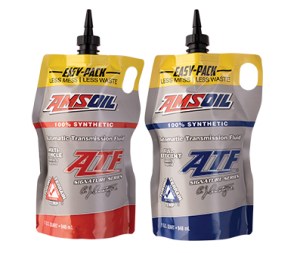22 Mar Proactively Service Your Transmission
Service your transmission, it will prevent headaches and save thousands of dollars down the road.
If you search “overlooked car maintenance” online, you’ll notice that nearly every list includes transmission fluid changes. Despite the transmission’s importance to vehicle performance and longevity, it’s out of sight and out of mind for most motorists – until they’re staring at a $3,000 repair bill.
Prevention is Best Practice
Most people direct mental energy toward things that require attention, not to things that are working properly. I doubt if you think about your water heater or septic system much. I’ll bet you’ll put your full attention once you step into an ice-cold shower in the morning or your basement floor suddenly feels extremely damp
Human nature isn’t the only factor working against us. The original equipment manufacturers (OEMs) are making it easier than ever to ignore transmission service with the popularity of “filled-for-life” transmissions and differentials today. Some don’t even include dipsticks or access plugs for checking or changing fluids. That sounds great to some motorists. “I don’t have to change or even check transmission fluid?
More Power = More Damaging Heat
The problem is, modern vehicles are tougher on transmission fluid than ever. The OEMs are in an endless arms race to produce more power than the competition. All that added power has to go through the transmission before reaching the wheels, yet modern transmissions are smaller and lighter than their predecessors.
They also use lower-viscosity fluids to help boost fuel efficiency. That translates into thinner fluid protecting against intense heat and wear inside a transmission that handles more power and produces more heat. And heat is one of the transmission fluid’s biggest enemies. It speeds the oxidation process and causes the fluid to chemically break down sooner.
Fluid that has broken down causes’ sludge and varnish to form, which clog narrow oil passages and can lead to stuck solenoids. Soon, your vehicle can begin to shift hard, hesitate or quit shifting altogether. Unfortunately, that’s when many motorists finally start to pay attention to transmission maintenance.
Check and Change Your Fluids
If that’s not enough, the fluid must last longer than before. For example, Ford* recommends changing transmission fluid in the 2022 F-150* every 150,000 miles (240,000 km), even in severe service when towing and hauling. The fluid has to deliver excellent cleanliness, wear protection and frictional properties throughout a longer drain interval despite increased power.
Here’s where the term “filled for life” become misleading – and potentially expensive. It really means, “filled for the life of the warranty.” Once the warranty period ends, you can bet the dealership or OEM isn’t going to fix your “filled-for-life” transmission after it fails due to lack of maintenance.
In fact, some OEMs even direct you to change transmission fluid in these units if your driving conditions fall under the “severe” designation, which applies to most drivers. For example, the 2022 RAM* 1500 includes a “filled-for-life” transmission that doesn’t require service in “normal” driving conditions, but the owner’s manual instructs you to change the fluid if it becomes “contaminated.” How are you supposed to know that if you can’t check it with a dipstick?
The 2022 Chevy* Silverado* owner’s manual instructs you to change fluid in its “filled-for-life” transmission every 45,000 miles (72,000 km) in severe service.
As you can see, it’s vital to check and periodically change transmission fluid, even in “filled-for-life” transmissions. Nothing lasts forever, and planning ahead and performing the service on your schedule is much less expensive and disruptive than reactively fixing a broken transmission.
Reserve Protection
This situation is a great selling point for Signature Series Synthetic Automatic Transmission Fluid (ATF, ATL). It resists heat and wear in the toughest conditions, and its built-in reserve protection means it lasts for twice the OEM’s severe-service drain interval. That means you can rest assured your transmission is protected, even if service is delayed


